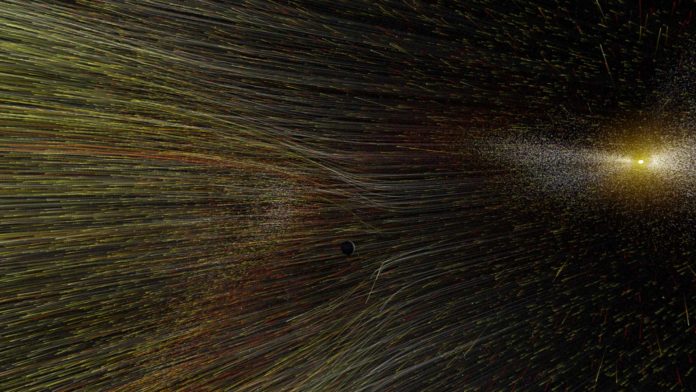NASA recently selected two new missions to study our sun and its dynamic effects on the space weather. One mission will study the sun’s mechanism of sending particles and energy to the solar system, whereas second will study the Earth’s response to it.
The sun continually emits plasma and particles into the space known as the solar wind. It generates radiation in space called space weather. When such particles interact with earth’s magnetic field near the earth, the solar wind could lead to profound impacts on human interests, such as astronauts’ safety, radio communications, GPS signals, and utility grids on the ground.
Understanding what drives space weather and its interaction with the Earth and lunar systems may help scientists to mitigate its effects, including safeguarding astronauts and technology crucial to NASA‘s Artemis program to the Moon.
1st mission: Polarimeter to Unify the Corona and Heliosphere (PUNCH):
The PUNCH mission will shed light on how corona generates the solar wind. Made out of four suitcase-sized satellites, PUNCH will image and track the solar wind as it leaves the Sun. The shuttle likewise will track coronal mass ejections– enormous emissions of solar material that can drive colossal space weather events near Earth – to more readily comprehend their advancement and grow new strategies for anticipating such eruptions.
2nd mission: Tandem Reconnection and Cusp Electrodynamics Reconnaissance Satellites (TRACERS):
The second mission is Tandem Reconnection and Cusp Electrodynamics Reconnaissance Satellites, or TRACERS. The TRACERS examination was in part chosen as a NASA-launched rideshare mission, which means it will be propelled as an optional payload with PUNCH. NASA’s Science Mission Directorate is emphasizing secondary payload missions as an approach to get more prominent science return.
TRACERS will observe particles and fields at the Earth‘s northern magnetic cusp district – the region circling Earth’s pole, where our planet’s magnetic field lines curve down toward Earth. Here, the field lines guide particles from the boundary between Earth’s magnetic field and interplanetary space down into the atmosphere.
Magnetic reconnection drives energetic events all over the universe, including coronal mass ejections and solar flares on the Sun. It also allows particles from the solar wind to push into near-Earth space, driving space weather there. TRACERS will be the first space mission to explore this process in the cusp with two spacecraft, providing observations of how processes change over both space and time.
Thomas Zurbuchen, associate administrator for the Science Mission Directorate at NASA Headquarters in Washington said, “We carefully selected these two missions not only because of the high-class science they can do in their own right but because they will work well together with the other heliophysics spacecraft advancing NASA’s mission to protect astronauts, space technology and life down here on Earth. These missions will do big science, but they’re also special because they come in small packages, which means that we can launch them together and get more research for the price of a single launch.”
The launch date for the two missions is no later than August 2022. The Explorers Program Office will manage both programs at NASA’s Goddard Space Flight Center in Greenbelt, Maryland.
